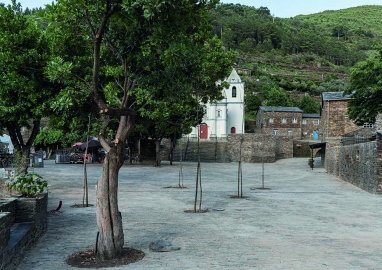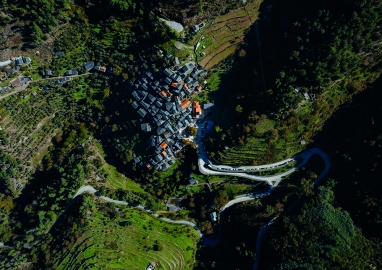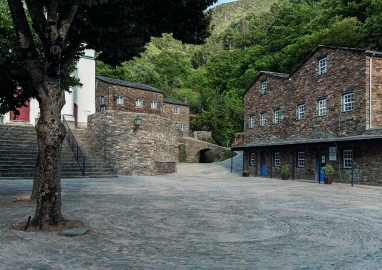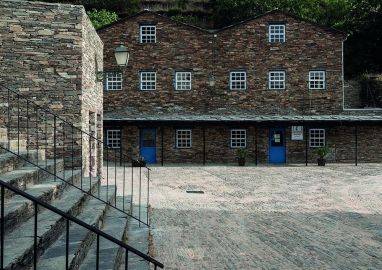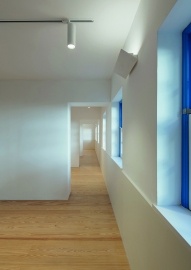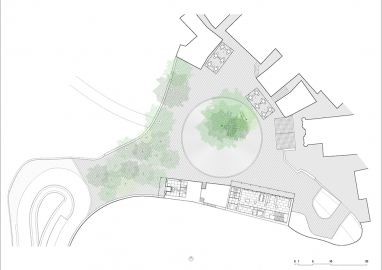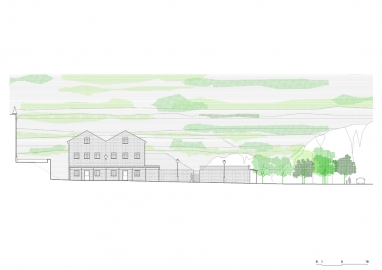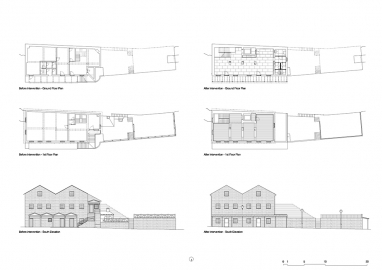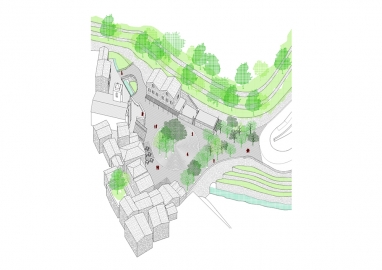Square and Tourist Office, Piódão
The only flat and open area of the steeped village of Piódão is given back its dignity as welcoming lobby and gathering place. What was previously a parking lot has been redesigned, paved and partially shaded using traditional materials and techniques. The space was given back to its people following their material and constructive culture.
The project rehabilitates and reconfigures a square and the tourist office building of Piódão.
The village of Piódão is located in the Serra do Açor, central Portugal. Its schist houses traversed by steep and narrow streets form an amphitheatre on a northwest-facing escarpment.
In its lower part, the Cónego Manuel Fernandes Nogueira square is the only open, flat and unobstructed space and serves as the main access to the village.
Over the years, the space has been occupied by cars as a parking lot. The project returns the space to the people as the gathering room of the village, favouring exchange and social interaction.
The materials and constructive solutions used both in the tourism office building and in the square came from the place. There is, therefore, a certain feeling that nothing was done, that it has always been as it is.
With the primary goal of removing cars and giving the space back to people, the space was freed from obstacles and its limits requalified and redefined.
Firstly, a grid of cherry trees, at the entrance, changes the sequence of arrival. After the first discovery of the village, made by car, in the distance, in which its landscape settlement is recognized, the trees postpone the second order of understanding of the whole: the appearance of the elevation of the village from its base. This vegetal filter also protects and withdraws the square from the road, preventing the passage of cars.
Secondly, the new paving of the square built in schist without unevenness or curbs, reinforces the new pedestrian character, and ensures universal accessibility. The formal complexity of the space, which lacks directionality, is approached with the introduction of a large central circle, at the axis of the church, which circumscribes the bust and the existing trees.
The different elements that make up the square: the church facade and the stone foundation on which it lands, the tourist office and the small houses with restaurants and cafes are arranged around this new soft centrality.
The intervention, both inside and outside the Tourist Office, aimed at cleaning and clarifying the existing building, removing elements and additions. A new shed protects the entrances to the building and contributes to a unitary image of the whole.
The project’s attitude was to act silently.
The existing trees, the statue, the public lighting, were preserved.
The new pavement was built with the same material and technique as the whole village, schist, following a tradition mastered by local builders.
The planted trees, at the entrance of the square, are autochthonous cherry trees.
The two porches, on the accesses to the Tourist Office and Public Toilets, were built with a delicate structure of metallic columns and wooden beams, and roofed with slate slabs, alike all roofs in the village.
The overall design approach aims to contribute to an arrangement where is difficult to grasp what is new and old, avoiding harming locals’ connection to place.
A connection between cultural and material sustainability is established, hopefully contributing to the settlement of new inhabitants in this very withdrawn interior of the country.

